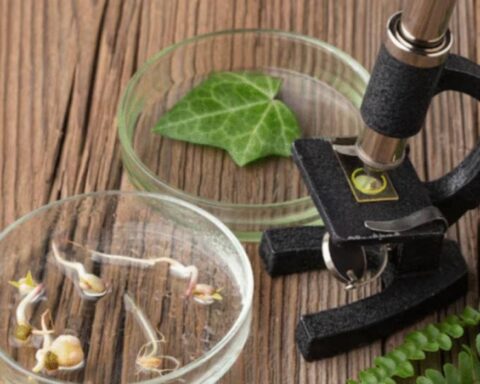Follicular Unit Transplantation (FUT) is a well-established method of addressing hair loss. Unlike newer techniques, FUT involves removing a strip of scalp tissue from the donor area, usually at the back of the head, and carefully transplanting the hair follicles into thinning or balding regions. While FUT offers reliable and lasting results, the recovery period can feel daunting for many patients. Understanding what helps with healing and how to care for your scalp post-surgery is key to achieving the best outcomes.
For patients considering a FUT hair transplant in Raleigh, knowing what to expect during recovery and how to promote faster healing can make the experience more comfortable and successful. Below are essential tips, combined with expert advice on what you can do to support your journey toward fuller, healthier hair.
Understanding the FUT Healing Process
Healing after a FUT procedure is different from other methods because of the strip excision technique. The donor site requires sutures or staples to close, which means there is a linear scar. With proper care and guidance from a clinic that specialises in hair restoration in Raleigh, most patients heal well without complications.
The first few weeks are critical, as the body works to close the incision, protect new grafts, and reduce swelling. After the stitches are removed, the healing process continues beneath the skin for several months. During this time, patients need to follow aftercare instructions carefully to minimise scarring, avoid infections, and encourage strong hair growth.
Follow Post-Surgery Instructions Closely
Every surgeon will provide detailed aftercare instructions tailored to your case. Adhering to these guidelines is the foundation of a smooth recovery. These instructions typically include:
- How to clean the scalp without disturbing grafts
- Which medications to take for swelling and discomfort
- When to return for follow-up visits
- Activities to avoid during the early healing stage
By carefully following these steps, you allow your scalp to heal properly and reduce the risk of complications.
Keep the Scalp Clean and Protected
Proper hygiene is essential after a FUT hair transplant in Raleigh. Your doctor will usually recommend gentle rinsing or washing a few days after surgery. This helps prevent crusting and keeps the grafts healthy. Using only approved shampoos or solutions ensures you do not irritate the scalp.
Additionally, avoid exposing your head to direct sunlight in the early stages of healing. Wearing a loose-fitting hat when outdoors provides protection without placing pressure on the grafts.
Manage Swelling and Discomfort
Mild swelling around the forehead or eyes is common during the first week after FUT. Cold compresses applied as instructed by your clinic can help reduce this discomfort. Your surgeon may also prescribe medication to ease pain and minimise swelling.
It is important not to apply excessive pressure to the scalp or scratch the treated area, as this can interfere with healing and damage grafts.
Rest and Avoid Strenuous Activities
One of the most effective ways to heal quickly is to give your body the rest it needs. Strenuous activities, including heavy lifting, intense exercise, or swimming, should be avoided for at least two weeks after surgery.
Physical strain can increase blood pressure, potentially causing bleeding or affecting the grafts. Light walking is usually safe and may even help improve circulation, but always confirm with your clinic when it is safe to resume regular activities.
Support Healing With a Balanced Diet
Nutrition plays a major role in recovery. A diet rich in protein, vitamins, and minerals supports the body’s natural healing processes. Focus on foods that contain:
- Protein – Eggs, fish, poultry, and legumes for cell repair

- Vitamin C – Citrus fruits and berries to boost collagen production
- Iron and Zinc – Lean meats and nuts to encourage hair follicle strength
- Omega-3 Fatty Acids – Salmon, chia seeds, and walnuts for scalp health
Hydration is equally important, as drinking enough water helps the body eliminate toxins and transport nutrients effectively.
Avoid Smoking and Alcohol
Smoking restricts blood flow, which slows down healing and can interfere with graft survival. Alcohol can also thin the blood and increase swelling. Both should be avoided for at least two weeks after your FUT procedure to give your scalp the best chance of recovery.
Be Patient With Hair Growth
It is natural to want immediate results after a hair restoration in Raleigh procedure. However, transplanted hair typically sheds within a few weeks before entering a resting phase. New growth often begins after three to four months, with fuller results visible between nine and twelve months.
Being patient and focusing on long-term outcomes can help you manage expectations and remain consistent with aftercare.
Attend All Follow-Up Appointments
Follow-up visits allow your surgeon to monitor your progress, remove sutures, and address any concerns. These appointments are critical for identifying issues early, such as infections or improper healing. Patients who remain consistent with their follow-ups often experience smoother recoveries and improved results.
Consider Complementary Treatment

Some patients choose to support their FUT transplant with additional therapies. Treatments such as Platelet-Rich Plasma (PRP) or Low-Level Laser Therapy (LLLT) may encourage stronger graft survival and stimulate growth. Discussing these options with a qualified clinic can help you decide whether they fit your needs.
Final Thoughts
Healing after a FUT transplant requires patience, consistency, and proper care. From following your surgeon’s instructions to eating a nutrient-rich diet and avoiding harmful habits, small steps can significantly speed up recovery.
For patients seeking a FUT hair transplant in Raleigh, choosing an experienced clinic for hair restoration in Raleigh is essential. Skilled surgeons not only perform the procedure with precision but also guide you through recovery, ensuring your new hair grows strong and natural-looking.
With the right approach, your FUT transplant can deliver lasting results, restoring both your hair and your confidence.
Read More Gorod








